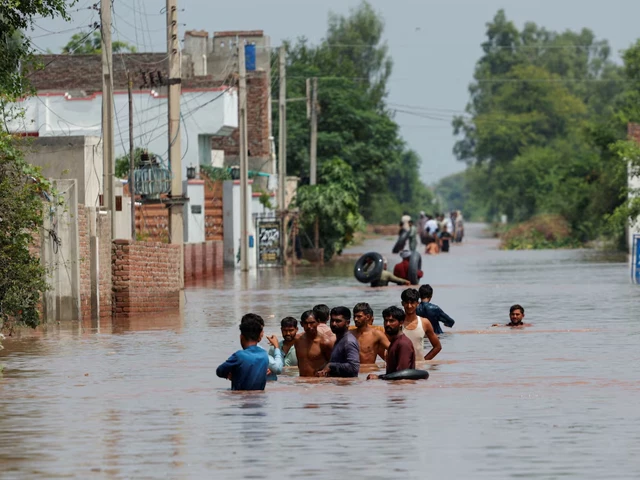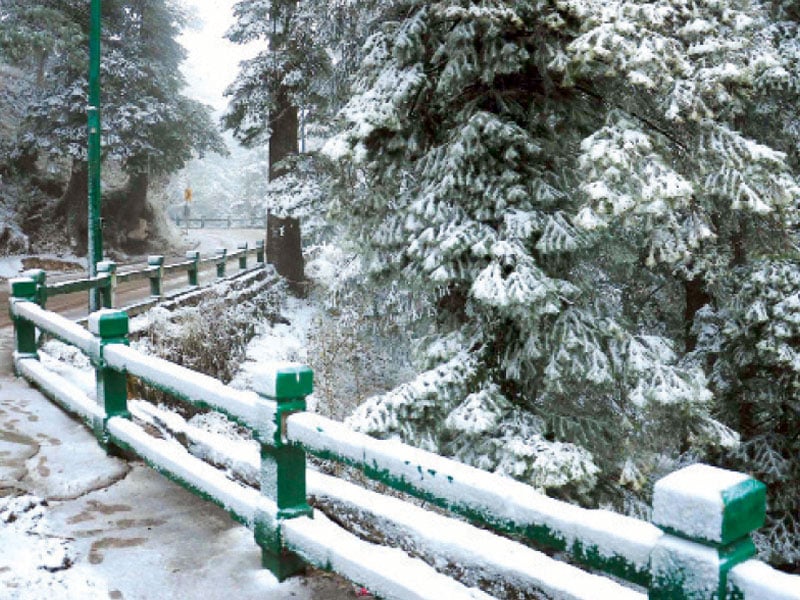Southern Punjab on high alert as floods displace millions
Floodwaters push into Sindh, Sukkur Barrage opens all gates to ease pressure; next 12 hours crucial

Southern Punjab is facing an escalating flood emergency as rivers overflow, embankments break, and authorities warn of further breaches that could displace tens of thousands more residents.
The Punjab Disaster Management Authority (PDMA) has directed urgent evacuations from flood-prone districts such as Muzaffargarh, Lodhran, Rajanpur, Liaquatpur, and Rahim Yar Khan, stressing that residents in riverbeds must be relocated to safe areas without delay.
PDMA DG Irfan Ali Kathia said all evacuees will be provided food, water, and medical facilities in relief camps, adding that police will assist in moving those unwilling to leave. He emphasised that the protection of lives is the government’s foremost priority and urged citizens to cooperate with rescue and administration teams.
The Chenab River has risen to dangerous levels in Multan, where water crossed the 394.5-foot mark, forcing mass evacuations and disrupting daily life. Floodwaters entered villages including Basti Gagran Kachor, Mirza Pur, and Hasan Kachor, leaving families stranded. Authorities diverted heavy traffic through Vehari and Khanewal as key roads near Sher Shah and Head Muhammadwala became unsafe.
Officials said pressure is mounting on Sher Shah Barrage and nearby dykes, where a controlled breach is under consideration to relieve strain on embankments. If executed, more than 8,000 homes and 30,000 people could be affected. Warnings have already been issued for nearby settlements, urging residents to move to relief camps.
Read More: Over 400 rescued as rains flood Karachi, death toll rises to four
Further downstream, India has released additional water into the Sutlej, intensifying flows at Harike and Ferozepur. At Head Panjnad, discharge reached 530,000 cusecs, classified as an “extremely high flood.” Pakistan’s Ministry of Water Resources has placed all departments on high alert.
In Muzaffargarh, 138 villages have submerged, affecting over 135,000 people. Rangpur reported another 50,000 displaced after 28 villages were inundated.
In Lodhran, breaches left multiple communities under water, while in Alipur, eight people were swept away; three were confirmed dead and five remain missing. Bahawalpur officials said 150,000 residents have been affected by rising waters in 98 locations.
Authorities fear the crisis could worsen in Jalalpur Pirwala, where 500,000 cusecs released from Head Trimmu surged downstream. Emergency measures are in place for the next 24 hours as thousands continue to flee low-lying areas. Local officials said more than 235,000 people and 180,000 livestock have been relocated to safer ground.
PDMA reported that 2.1 million people have already been displaced across Punjab this monsoon, with nearly two million acres of farmland submerged. Crops of cotton, maize, and sesame have been wiped out in several districts, compounding economic losses.
Public health concerns are also rising
The Punjab Health Department said more than 158,000 flood-affected people have contracted diseases including respiratory infections, skin ailments, diarrhoea, and eye infections.
Snakebite and dog bite cases have also been reported in relief camps. In Arifwala, stagnant water has triggered outbreaks of waterborne diseases.
The provincial government has deployed more than 300 boats, 400 inflatable rafts, and thousands of life jackets in Multan, Muzaffargarh, Bahawalpur, Lodhran, and Rahim Yar Khan.
The Army and Rescue 1122 are assisting with evacuations and efforts to plug breaches. Chief Minister Maryam Nawaz directed emergency and medical aid for the displaced and ordered the creation of a new “Lost and Found Department” to catalog damages to homes, farmland, and livestock for compensation purposes.
Also Read: Govt declares climate, agriculture emergencies after flood devastation
According to the National Disaster Management Authority, Punjab alone has recorded 246 deaths this season, while nationwide tolls stand at 929, with more than 1,000 injured.
Floodwaters have now pushed into Sindh, where the Indus, Sutlej, and Chenab continue to rise. At Guddu Barrage, flows exceeded 500,000 cusecs on Wednesday, with warnings that an even higher flood surge could arrive within 12 hours.
Sukkur Barrage recorded more than 440,000 cusecs upstream as all gates were opened to ease pressure. Despite ongoing relief, villagers in Bhawana, Ahmedpur Sial, Uch Sharif, and Kabirwala remain cut off, appealing for urgent rescue.
Officials caution that the coming days will be decisive. With inflows continuing from India and upstream barrages under strain, southern Punjab and Sindh remain on high alert for what experts call one of the most severe flood emergencies.





















COMMENTS
Comments are moderated and generally will be posted if they are on-topic and not abusive.
For more information, please see our Comments FAQ